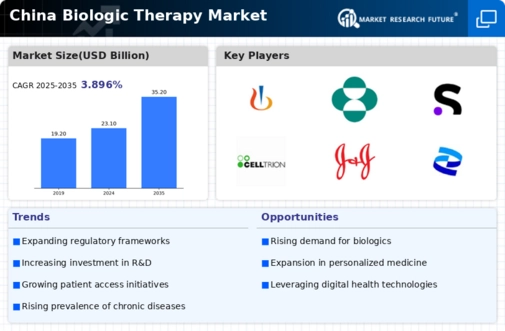The China Biologic Therapy Market is characterized by rapid growth and increasing competition as companies vie for market share in a landscape driven by innovation and evolving healthcare demands. The market has seen an influx of both domestic and international players, all striving to tap into the burgeoning demand for biologics, which are vital in treating a variety of acute and chronic diseases, including cancer and autoimmune disorders. As the regulatory environment evolves and healthcare access expands, companies are focusing on developing advanced therapeutic solutions and improving patient outcomes.
Competitive insights in this market reveal a dynamic atmosphere where research and development, strategic partnerships, and innovative marketing approaches are critical for gaining an edge over rivals. In the context of the China Biologic Therapy Market, Novartis has established a strong foothold through its extensive portfolio of biologic therapies. The company is recognized for its cutting-edge research initiatives and strategic collaborations with local healthcare institutions, enhancing its products' visibility and adoption in a rapidly evolving market. Novartis excels in providing therapies for conditions such as cancer and multiple sclerosis, leveraging its strong brand reputation and commitment to patient-centric care.
Additionally, its ability to adapt to the regulatory landscape of China has allowed Novartis to effectively navigate challenges and capitalize on new opportunities, making it a formidable competitor in the biologic therapy segment.
Merck has similarly positioned itself as a significant player in the China Biologic Therapy Market, focusing on advanced therapeutic solutions that cater to a wide range of medical needs. The company's portfolio includes key biologic products that target various diseases, with innovations in immunotherapy and personalized medicine playing a crucial role in its growth strategy. Merck's commitment to research and development, coupled with strategic mergers and acquisitions, has strengthened its market presence in China, allowing the company to broaden its reach and accessibility.
The company is well-regarded for its strong partnerships with local entities, which enable it to enhance its product offerings while ensuring compliance with China’s regulatory frameworks. Through these initiatives, Merck aims to ensure that its biologic therapies are available to patients in need, further solidifying its competitive standing in the market.















